How to unclog a garbage disposal – a step-by-step guide
Need to learn how to unclog a garbage disposal? Although not the nicest job, it is possible to unclog it without needing to call a plumber. Here we talk you through the steps.
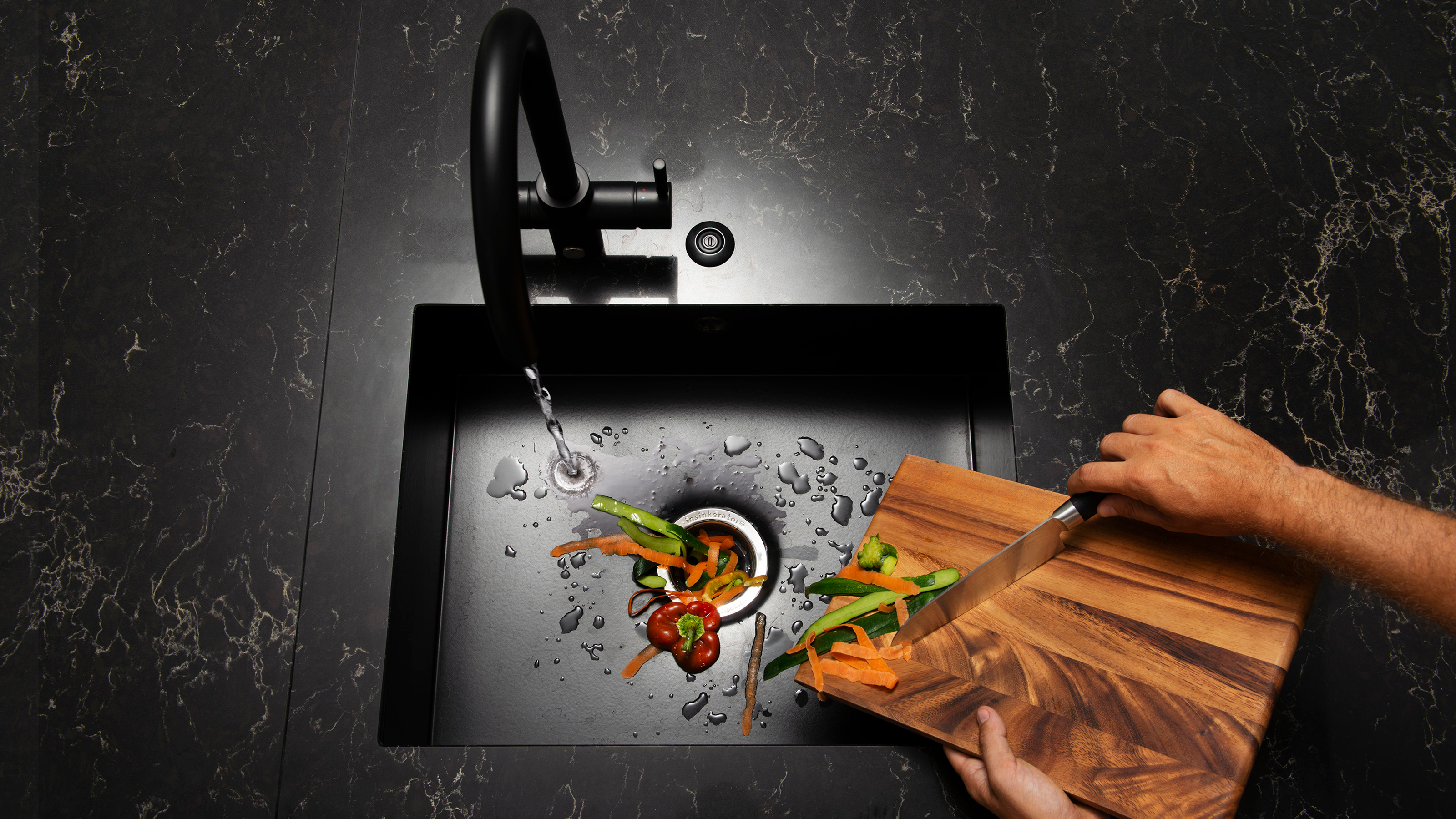
Looking for advice on how to unclog a garbage disposal? Sure, it's not a lovely job, but it is one you can usually do yourself without having to fork out to hire a plumber. After all, the DIY route can prove quicker than calling in a plumber, and it will certainly save you money if you can avoid calling out a contractor.
The answer is that unclogging a garbage disposal is a task you might be able to undertake with just a few tools plus some store cupboard supplies, and it’s one that even DIY novices can take on.
But you will need a little knowhow in order to do the job both safely and without damaging the components of your garbage disposal, and that’s where we come in. Here you can find out how to unclog a garbage disposal yourself and we’ve included pro tips to make your life easier.
How to unclog a garbage disposal
Garbage disposals work by breaking up food scraps before they reach the drainpipe, they do this with blades run by an electric motor that’s attached to the underside of your kitchen sink. Tempting as it may be, not everything can be put down - food scraps are fine – meat, fruit and veg, but some items that are fibrous can get tangled in the blades – onion skin and cornhusks for example.
Pouring oils down your kitchen sink is also a no, as are fats like butter and grease. They can form clogs that will combine with other elements and cause blockages. Food that expands is also not recommended, like pasta and some vegetables and coffee grounds can cause a thick sludge. Bones are an obvious no as are any pits from avocado or fruit.
Other key points are to feed the garbage slowly which will give it time to chop up the scraps, and make sure you keep the water running as this will help everything to drain through naturally.
Note that if your problem is how to unclog a garbage disposal with standing water, you should go in at step 3. What’s happened if that’s the case? ‘If a garbage disposal won’t drain, there’s likely a clog from food debris. The clog could be either in the pipes or in the garbage disposal itself,’ explains Brian Nagele, CEO of Restaurant Clicks, and who has owned and operated in restaurants in the Philadelphia area.
Get small space home decor ideas, celeb inspiration, DIY tips and more, straight to your inbox!
So don’t panic. We have some great tips below on how to help keep your garbage disposal running smoothly and how to unclog it should you ever need to.
You will need:
- Flashlight
- Tongs or pliers with long handles
- Plunger
- Sponge
- Baking soda
- White vinegar
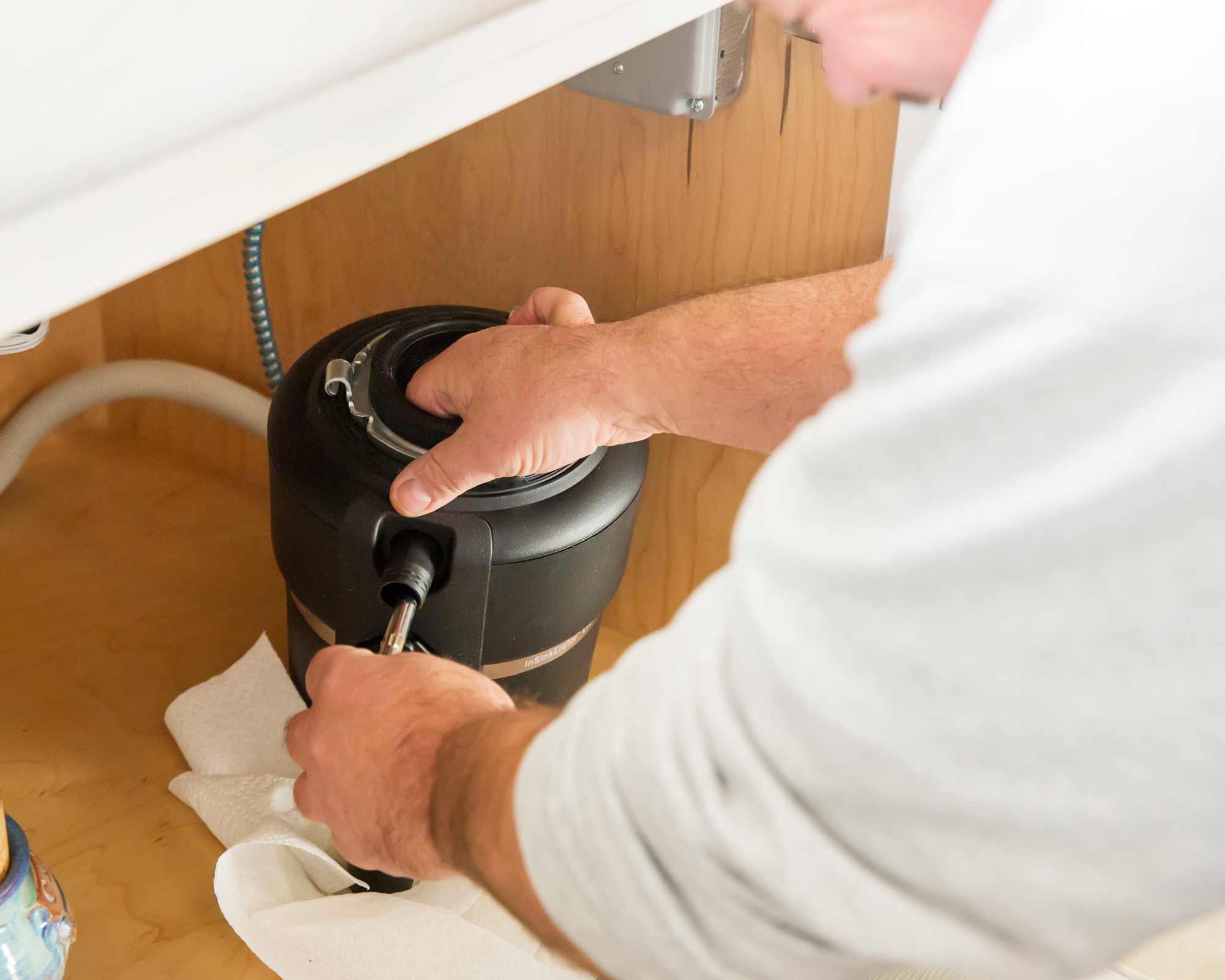
1. Reset the garbage disposal
Yup, it can be as simple as trying the reset button of the garbage disposal. ‘To do this, ensure that the machine is powered off, then find the button on the bottom of the machine,’ explains Jake Romano of John The Plumber.
‘Sometimes the garbage disposal will automatically shut off due to overheating or some other problem, and pressing the reset button will often solve a garbage disposal that won’t turn on.’
2. Listen for the noise it's making
Please don’t put your hand in the garbage disposal at any point. Instead, have a listen to your unit as it could indicate the problem.
If there’s a humming/whirring noise it could be that an object like a bone for example has got stuck and it’s jamming the propeller plate. You can also reset the unit a couple of times to see if that drains the water.
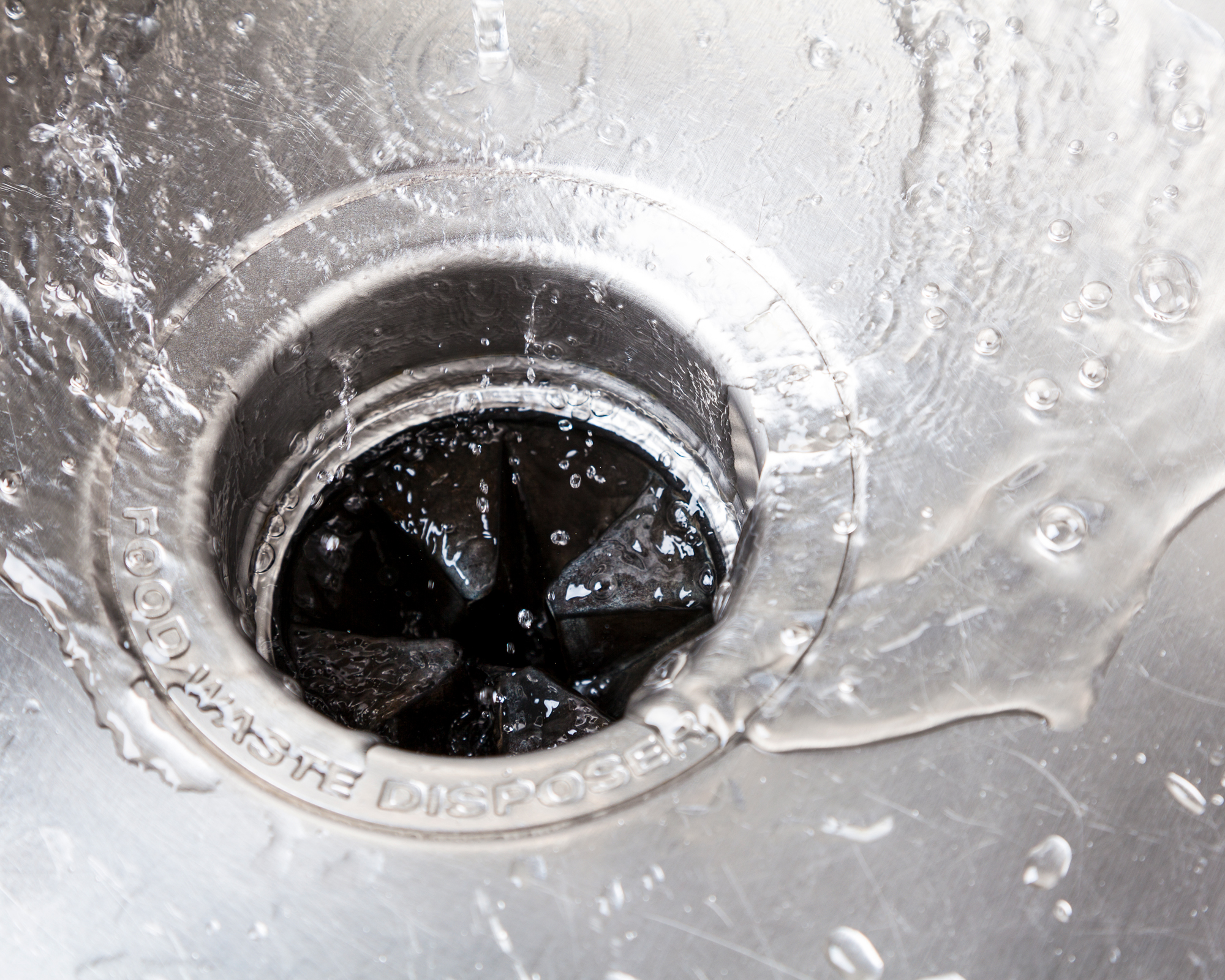
3. Search for blockages and remove them
If the reset button didn’t work, it’s time to have a look down the drain to see if you can spot what’s causing the clog. But before you start, cut the power to the garbage disposal, bearing in mind that you might need to turn off the circuit breaker to do this.
Once the power is off, shine the flashlight into the drain. See anything that might be the cause of the problem in the garbage disposal’s blades? Use tongs or pliers to pull it out. Be safety conscious, though. ‘Remember never to put your hands inside the garbage disposal,’ warns Edward Jones, founder and CEO of HomeCareHow.
If you found and removed gunk from the garbage disposal, switch it back on – using the reset button if necessary – and see if it drains water. If the water drains away then you’ll know you’ve dislodged it. You may have solved the problem but, if not, move on to the next step.
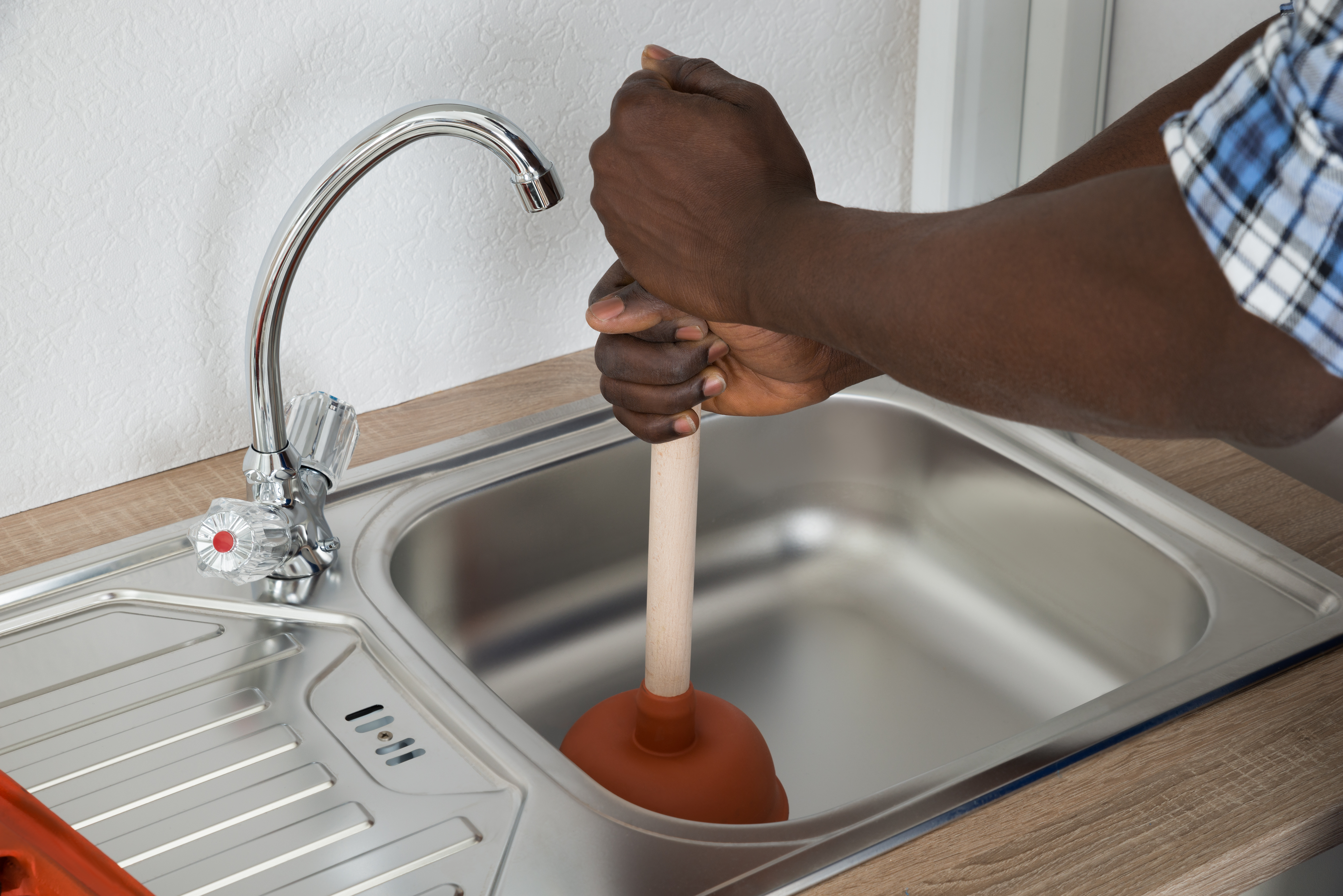
4. Give it a plunge
Sometimes, the simple things can be the most effective. If you know anything about how to unblock a sink, the problem might be a build up in the plumbing line, and using a plunger can loosen it. Again, turn off the garbage disposal and put some water into the sink (unless we’re talking how to unclog a garbage disposal that won’t drain and there already is water there) and plunge up and down steadily.
If you have a plunger and the water has risen then give it a go. Make sure you cover the sink hole completely and if you have a double sink plug the other sinkhole first. Give the plunger a good strong tug repeatedly and hopefully it will remove the blockage and the water will drain away.
‘If you place the plunger over your garbage disposal, and then run a small amount of water in the sink to seal around the edges of your plunger, it will help,’ advises landlord and rehabber in the greater Sacramento region Robert Taylor of The Real Estate Solutions Guy. Water splashing outside the sink as you plunge? ‘The problem is probably not in your disposal, but further down the line,’ says Robert.
If water will now drain, turn the garbage disposal back on and see if the clog now clears.
But how to unclog a garbage disposal that’s still not working despite your efforts so far? Move to the next step.
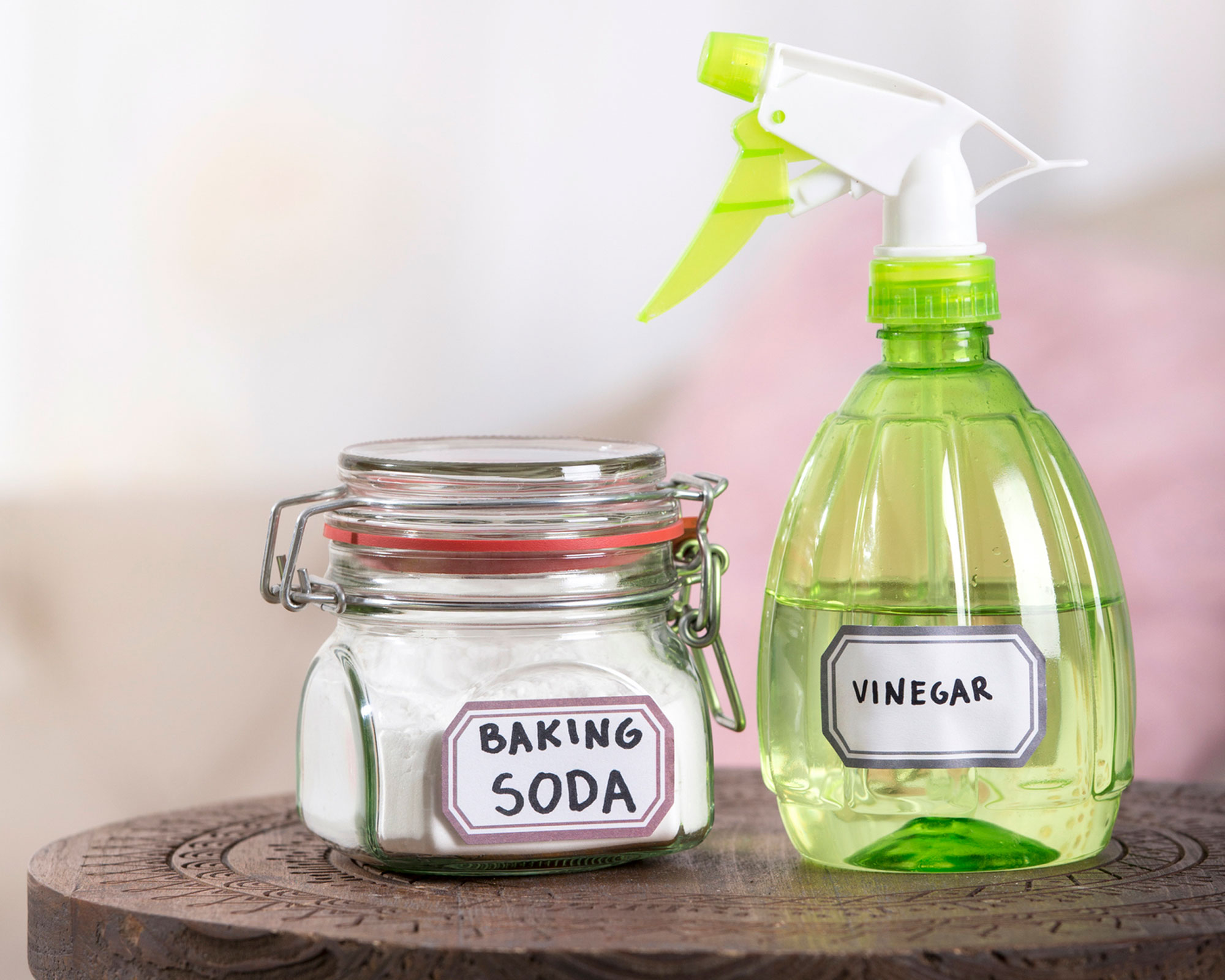
5. Use baking soda and vinegar
If other strategies haven’t worked, try a combination of natural spring cleaning standbys baking soda and vinegar which are also perfect to clean a stainless steel sink.
Before grabbing the chemical concoctions from the nearby store – which aren’t recommended for garbage disposal units however tempting, opt for the natural route. Start by turning off the power via unplugging or using the breaker panel - NEVER put your hand down your disposal unit as mentioned before.
‘First, allow the garbage disposal to drain completely,’ says Robert Taylor. ‘You should be able to see the bottom of the disposal when looking down through the sink. If not, use a sponge to remove as much water as possible from the disposal. Next, pour a third of a cup of baking soda into the garbage disposal, followed by a half cup of white vinegar. It will bubble and fizz for several minutes, but this is expected. After 15 minutes, fill a pitcher with the hottest hot water you can get from your bathtub and pour it down your garbage disposal.’
Thinking of using a drain-clearing product to unclog your garbage disposal instead? Don’t. ‘Never put caustic drain-clearing chemicals in your garbage disposal because they can splash back on you or destroy your disposal,’ says Robert.
Switch the garbage disposal back on and check if it’s working. If not, it’s time to call in a pro. How's that for a baking soda cleaning tip.
6. Open up the garbage disposal
If the unit is still making an odd noise then the grinding mechanisms in the unit are blocked. Turn everything off again at the source. Most units can be opened using a hex-head key or an allen wrench.
Place it in the shaped hole underneath the unit and twist it a few times. This will hopefully dislodge it as this socket is connected to the impeller hub and moving it can loosen stuck objects. Reconnect everything again and turn it back on to check.
7. Double test the disposal unit
Turn the disposal back on and run the faucet, hopefully by now at least one of the above will have worked and your unit will be sounding like it always does. If not, repeat the process to remove the jam inside. If all else fails, you may have to give a plumber a call, the motor may have broken and will need to be replaced.

8. Keep your disposal unit naturally fresh
You can keep your unit smelling pleasant by cutting a lemon in half and throwing half of it in the disposal. As well as deodorizing the unit, the lemon will help to prevent a build-up of residue within it and it will smell fresh and lemony.
Why is my garbage disposal not draining?
The reason why your garbage disposal isn’t draining might be because of what you’re putting down there.
‘Paper towels, orange and banana peels, raw meats, and other tough objects are meant to go in the trash and not in the garbage disposal,’ explains Shawn Laib, home maintenance expert with Insurance Providers. ‘The garbage disposal breaks down objects that are easily compostable.’
Other possible causes? ‘Most disposal problems happen because homeowners don’t run the disposal long enough to fully grind everything in it,’ says Robert Taylor. ‘When running your disposal, turn on the water and run your disposal until you don’t hear anything being ground up. Now, shut off your disposal and then the water. This extra bit of water will help flush out any bits of food that may still be sitting in the disposal’s drain line.’
Grease could also be a culprit and the lesson here is that you shouldn’t pour it down the sink. ‘When it comes in contact with the disposal and other plumbing, it quickly congeals,’ says Robert. ‘This grease slowly builds up in the plumbing and can create problems at several places.’
Can a garbage disposal unclog itself?
A garbage disposal can unclog itself – but not without your input. ‘It can unclog itself if you start to pry some of the excess junk out of the sink first, but if you don’t give it that first helping hand then the problem is only going to get worse,’ says Shawn Laib.
‘Pay attention to what you are putting down the sink and avoid the non-compostables.’

Sophie has been an interior stylist and journalist for over 22 years and has worked for many of the main interior magazines during that time both in-house and as a freelancer. On the side, as well as being the News Editor of indie magazine, 91, Sophie trained to be a florist in 2019 and launched The Prettiest Posy where she curates beautiful flowers for the modern bride.

